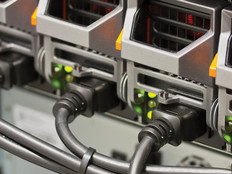The Business Case for Thin Clients Is Clear and Positive
I wrote in 2009 that federal CIOs should adopt thin client technology as their main client devices for a variety of reasons.
Since then, several CIOs have adopted thin clients, but most have not. In addition, while the Office of Management and Budget has pushed heavily for adoption of other sensible initiatives — most notably data center consolidation and cloud computing — there has been no central initiative pushing the adoption of thin clients.
In my view, the business case for thin remains as clear and positive as it was in 2009 and, with several advances in technology, much easier to adopt and implement. The rationale for moving to thin computing was strong then, and with the proliferation of mobile devices, it is even stronger today.
What Is Thin Computing?
Number of thin client devices expected to be shipped worldwide in 2013
SOURCE: IDC
Thin clients are essentially desktop or notebook computers with no internal or attached hard drives for data storage. The client must be connected to a server to operate. In this model, the server provides the bulk of computing functionality and stores the data. Thin clients give end users a PC-like experience while providing IT leaders with a computing infrastructure that can be centrally controlled.
Thin computing delivers benefits in several key areas.
First, security is improved in a variety of important ways. Data is stored on the server, not the client device. This means that CIOs can worry less about client computers, hard drives or thumb drives being stolen or otherwise compromised. In addition, CIOs can focus their attention on securing the servers that power thin clients. It is much easier and less costly to secure a manageable number of servers in a data center than to protect data stored on thousands of widely distributed devices. This architecture also makes it simpler to ensure continuity of operations.
How Does Thin Fit In?
During President Obama’s time in office, the Federal CIO’s office has pursued several key initiatives into which thin computing could fit:

A key trend — bring-your-own-device — has also emerged in recent years. While it is unlikely that agencies will require employees to provide their own computing devices as their primary client device, the thin client model is quite compatible with the BYOD trend, and agencies will increasingly connect with citizens using whatever devices citizens decide to use.
The bottom line: Thin is very compatible with current initiatives and trends.
Second, thin clients cost less. Thin devices cost roughly half as much as a PC and require replacement roughly half as often, making upgrades much less expensive. Since thin devices have fewer com-ponents that can malfunction, servicing them is less costly. In a thin client architecture, most software resides on the servers, not the clients, significantly reducing the labor involved for upgrades and patches. CIOs realize the full benefits of remote client management from the data center. To summarize, thin clients have a lower total cost of ownership than PCs.
Third, a thin client infrastructure is also more environmentally friendly because it uses fewer components and can operate on less power. With today’s focus on green IT, this becomes both a cost and political advantage over more traditional PC usage.
Why Now?
Since 2009, the availability and usage of smartphones has exploded. Billions of people around the world enjoy a thin client experience every day. Thousands of free or low-cost applications improve the daily lives of many users, and make their mobile technology more useful and their lives more productive.
Although somewhat slow to adapt, most federal agencies have delivered applications to mobile users that bolster access to government information resources and improve the interaction between government and its citizens. The move to mobile is a very good thing and a great opportunity for government to continue to improve relations with citizens.
The emergence of mobile computing in recent years has had a profound effect on federal IT. Mobility is an unstoppable force in government computing, and thin clients represent a powerful way to leverage this technology.
Target Acquired
CIOs have embraced mobile computing for interacting with citizens. This trend will continue and intensify. The access to government and the value that citizens receive will continue to improve. Business processes for government-citizen transactions will continue to be simplified by use of technology, and citizens will both demand and appreciate these improvements.
The pace of change within government organizations is, unfortunately, much slower. To better align citizen-based external interactions with employee-based internal interactions, and to capture the advantages of improved security, lower cost and reduced environmental impact, CIOs must aim for the following achievements:
- Extensive use of mobile devices based on thin technology
- Cloud-based data and applications
- No permanent local client storage or storage devices
- Full-service managed security of servers, with 24/7 monitoring and quick-reaction capability.
Agencies that reach these goals will find that they can expect a variety of benefits:
- Improved security
- Improved customer satisfaction
- Enhanced productivity via improved business processes
- Reduced cost per comparable usage.
The administration has a lot on its plate, but I still wonder: Why isn’t thin computing considered an important federal priority?








